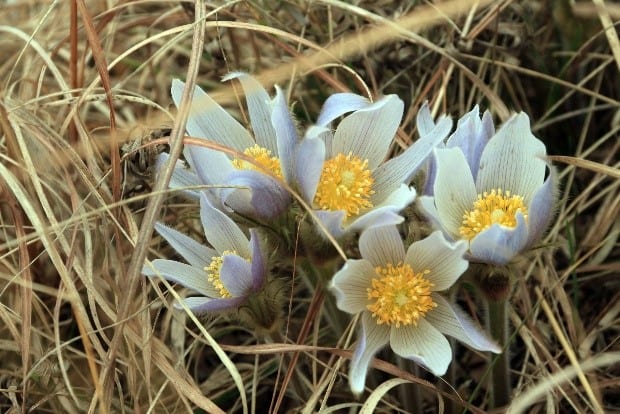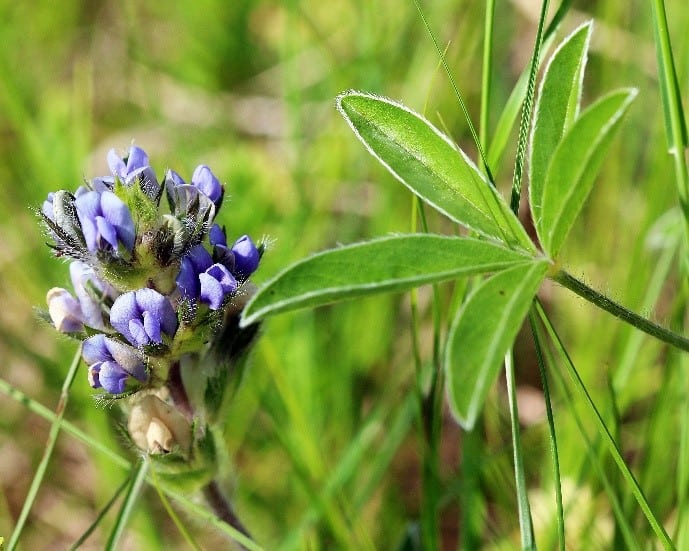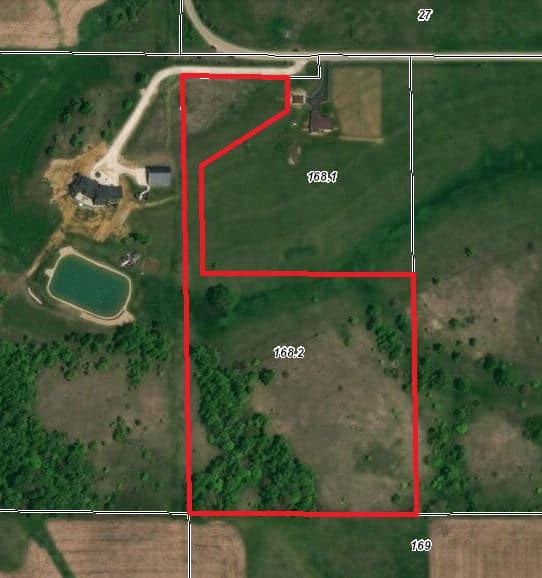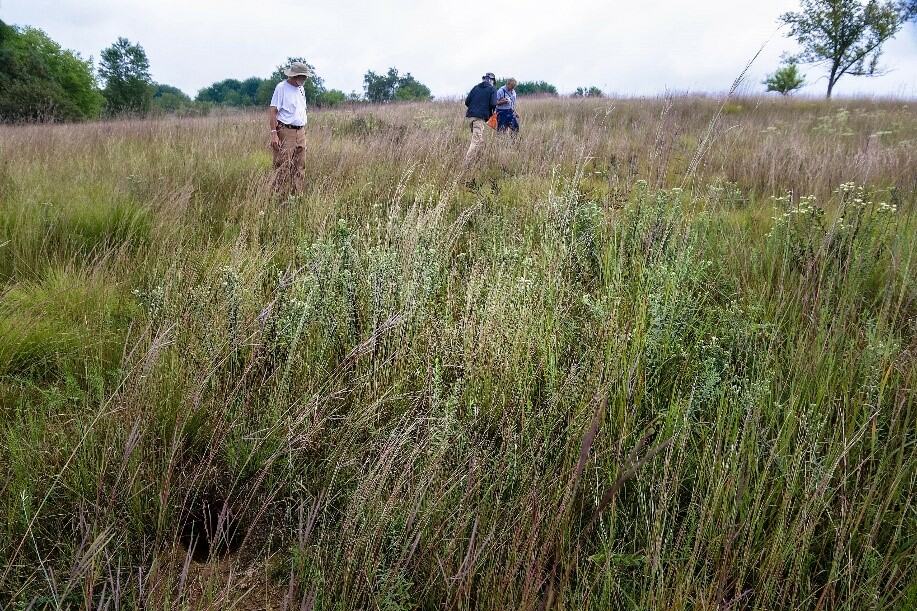
Photo credit: Jerry Newman
Skinner Prairie
Skinner Prairie is a hillside north of Monroe with a rich history. As early as 1828, John Skinner found lead deposits here in rock outcrops at the surface. U.S. surveyors noted Skinner’s diggings in May 1832 on the section line map marked today by power poles.
Pasque flower and lead plant still bloom in the thin soil at Skinner. The pits are easy to find, and the prairie is open for hiking and birding — thanks to a donation of 12.10 acres in 2018 to The Prairie Enthusiasts by Jim and Karen Freymiller.
There are no trails on the prairie, and is considered a difficult hike.
ACCESS & DIRECTIONS
Located in Green County, Wisconsin, between Monroe and Monticello off Highway 69. Go west on either Center Road or Cold Springs Road, which merge, and go west 1 mile to W5677 Center Road. Open every day. No hunting. From the west, Skinner Prairie is between County N and Hwy 69; take Buehler Road to W5677 Center Road. Park along Center Road & walk in past the mailbox for W5677 Center Road, the eastern driveway. Please do not block either driveway. Access to the prairies is on foot from the driveway, past the cemetery via the unpaved maintenance two-track. Ahead and to the right is Little Skinner, a small parcel that marks the northwest corner, and the junction of 4 sections (2, 3, 10, and 11) in Monroe Township. To get to the big prairie, proceed downhill to the south via a 50-foot wide access through old pasture. The low ground can be wet, as it drains this valley into Argus School Branch and Bushnell and Skinner Creeks. Big Skinner prairie is the northwest-facing hillside, with wooded ravines on both edges. Yellow signs mark our boundaries. The central prairie is steep and rocky, with deep pits.
Google Map
Description & Significance

Photo credit: Jerry Newman
In the early spring, look for pasque flowers and listen for meadowlarks. Find a population of prairie turnip (Pediomelum esculentum), a plant of Special Concern in Wisconsin, with optimal viewing from early June to late August. See kingbirds hunt insects from the hawthorns. Practice your ID skills: find bluestems, dropseed and side oats grama. The autumn months bring chapter seed collecting parties to Skinner Prairie for purple prairie clover and coreopsis. Notice how the prickly ash and hawthorns survived years of grazing to form large native colonies.

Ownership History

Photo credit: Jerry Newman
In 1976, the Wisconsin Department of Natural Resources published a Natural Area Inventory of Green County, written by Gary A. Birch with the assistance of Gary Eldred, Reynold Zeller and Clifford Germain. One of their sites was Sager Prairie, 35 acres of hillside in the Town of Monroe: “A relatively large dry prairie dominated by side-oat grama and little bluestem. There are more than 40 prairie species present.”
Local historian and prairie enthusiast Gary Felder visited Skinner Diggings one spring day in 1987, and found pasque flowers “in numbers that stagger the imagination,” with thousands of the early spring wildflowers covering the entire remnant hillside “like a blanket” spreading over the old mine shafts and rock piles. He wrote an article for the December 1988, newsletter of the Wisconsin Prairie Enthusiasts about Skinner Prairie:
“It is not very often that an individual is fortunate enough to find a natural area that satisfies the interests of two hobbies. In my case, local pre-settlement and early pioneer history coupled with the enjoyment of Green County’s remnant prairie sites. Skinner Prairie fits these criteria like no other site in Green County.”
In 1996, Gary Felder tried to find a buyer for Skinner Prairie — 40 acres of remnant prairie – that was subdivided into three home lots by the owner and listed with a local realtor. All the likely conservation buyers had other projects at the time, so all three lots now have houses. One of the buyers was Jim and Karen Freymiller, who built a house off Center Road, away from the prairie hillside that was their backyard acreage. One day Felder knocked on their door, and invited the couple to explore the prairie and diggings with him. Jim grew up in Boscobel and trained bird dogs, so he quickly caught Gary’s enthusiasm for native landscapes. In addition, this one had a chapter from Green County’s early mining history.
Management
Volunteers from the Prairie Bluff Chapter have thinned out sumac and prickly ash on all sides. We mow weeds every summer to prevent parsnip, sweet clover and wild carrot from going to seed. We collect seeds here: side-oats grama, little bluestem and dropseed. Skinner Prairie, unburned for 100 years, got weedy and brushy after cattle stopped grazing about 70 years ago. Currently our fire regime is to burn some of this hillside, every five years (2013, 2018, 2023), although we burned a quarter-acre of a west side remnant for dropseed production in 2019.
